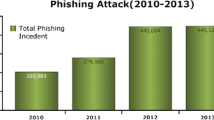Abstract
Recently, indiscriminate ransomware attacks targeting a wide range of victims for monetary gains have become a worldwide social issue. In the early years, ransomware has used e-mails as attack method. The most common spreading method was through spam mail or harmful websites. In addition, social networking sites or smartphone messages are used. Ransomware can encrypt the user’s files and issues a warning message to the user and requests payment through bitcoin, which is a virtual currency that is hard to trace. It is possible to analyze ransomware but this has its limitations as new ransomware is being continuously created and disseminated. In this paper, we propose an enhanced ransomware prevention system based on abnormal behavior analysis and detection in cloud analysis system—CloudRPS. This proposed system can defend against ransomware through more in-depth prevention. It can monitors the network, file, and server in real time. Furthermore, it installs a cloud system to collect and analyze various information from the device and log information to defend against attacks. Finally, the goal of the system is to minimize the possibility of the early intrusion. And it can detect the attack quickly more to prevent at the user’s system in case of the ransomware compromises.






Similar content being viewed by others
References
Jang-Jaccard J, Nepal S (2014) A survey of emerging threats in cybersecurity. J Comput Syst Sci 80(5):973–993
Furnell S, Emm D, Papadaki M (2015) The challenge of measuring cyber-dependent crimes. Comput Fraud Secur 2015(10):5–12
Jingle IDJ, Rajsingh EB (2014) ColShield: an effective and collaborative protection shield for the detection and prevention of collaborative flooding of DDoS attacks in wireless mesh networks. Hum. Centric Comput. Inf. Sci. 4(1) 1–19
Feng L, Liao X, Han Q, Li H (2013) Dynamical analysis and control strategies on malware propagation model. Appl Math Model 37(16–17):8225–8236
Symantec (2014) Internet security threat report. http://www.symantec.com/security_response/publications/threatreport.jsp
Andronio N, Zanero S, Maggi F (2015) HELDROID: dissecting and detecting mobile ransomware, RAID 2015, LNCS 9404, pp 382–404
Everett C (2016) Ransomware: to pay or not to pay? Comput Fraud Secur 2016(4):8–12
Elsevier Network security (2016) Ransomware expands, attacks hospitals and local authorities, and moves to new platforms. 2016(3):1–2. Editied by Steve Mansfield-Devine, Publishing Director: Bethan Keall. http://www.sciencedirect.com/science/article/pii/S1353485816300228
Nath HV, Mehtre BM (2014) Static Malware analysis using machine learning methods. Second International Conference SNDS 2014 Proceedings, Communications in Computer and Information Science, vol 420, pp 440–450
Cisco (2015) Ransomware on steroids: Crytowall 2.0. http://www.blogs.cisco.com/security/talos/crptowall-2
Threatpost (2013) Researchers uncover affiliate network for ransomware, by Tom Spring. https://www.threatpost.com/researchers-uncover-affiliate-network-for-ransomware/118452/
Journal Network Security (2015) Ransomware defeated but new forms emerge. 2015(11). Editied by Steve Mansfield-Devine, Sarah Gordon, Publishing Director: Deborah Logan. http://www.dl.acm.org/citation.cfm?id=2850884
Narudin FA, Feizollah A, Anuar NB, Gani A (2014) Evaluation of machine learning classifiers for mobile malware detection. Soft Comput Methodol Appl 20(1):343–357
Gazet A (2010) Comparative analysis of various ransomware virii. J Comput Virol 6(1):77–90
Microsoft. File system minifilter drivers. https://www.msdn.microsoft.com/enus/library/windows/hardware/ff540402%28v=vs.85%29.aspx,2014
Spagnuolo M, Maggi F, Zanero S (2014) BitIodine: extracting intelligence from the bitcoin network. Financial cryptography and data security (FC 2014), LNCS, vol 8437, pp 452–463
Xing X, Meng W, Lee B, Weinsberg U, Sheth A, Perdisci R, Lee W (2015) Understanding malvertising through Ad-injecting browser extensions. WWW ’15 Proceedings of the 24th International Conference on World Wide Web, pp 1286–1295
Sood AK, Enbody RJ (2011) Malvertising—exploiting web advertising. Comput Fraud Secur 2011(4):11–16
Symantec (2013) Massive malvertising campaign leads to browser-locking ransomware. http://www.symantec.com/connect/blogs/massive-malvertising-campaign-leads-browser-locking-ransomware
Malware don’t need Coffee (2015) Guess who’s back again? Cryptowall3.0. http://www.malware.dontneedcoffee.com/2015/01/guess-whos-back-again-cryptowall-30.html
Cabaj K, Gawkowski P, Grochowski K, Osojca D (2015) Network activity analysis of CryptoWall ransomware. PRZEGLAD ELEKTROTECHNICZNY 2015(15):201–204
Dell secureworks (2014) Cryptolocker ransomware. http://www.secureworks.com/cyber-threatintelligence/threats/cryptolocker-ransomware/
Mansfield-Devine S (2014) Tor under attack. Comput Fraud Secur 2014(8):15–18
Cisco (2015) Threat spotlight: TeslaCrypt—decrypt it yourself. http://www.blogs.cisco.com/security/talos/teslacryptj
RanCERT (2015) https://www.rancert.com/bbs/bbs.phpmode=view&id=18&bbs_id=case&page=2&part=&keyword=
EnigmaSoftware (2016) locky File extension’ ransomware. http://www.enigmasoftware.com/lockyfileextensionransomwareremoval/
Kharraz A, Robertson W, Balzarotti D, Bilge L, Kirda E (2015) Cutting the Gordian knot: a look under the hood of ransomware attacks. Detection of Intrusions and Malware, and Vulnerability Assessment(DIMVA): 12th International Conference, pp 3–24
Yang T, Yang Y, Qian K, Lo DCT, Qian Y, Tao L (2015) Automated Detection and Analysis for Android Ransomware. In: HPCC-CSS-ICESS ’15 Proceedings of the 2015 IEEE 17th International Conference on High Performance Computing and Communications, 2015 IEEE 7th International Symposium on Cyberspace Safety and Security, and 2015 IEEE 12th International Conf on Embedded Software and Systems. IEEE Computer Society Washington, DC, USA, pp 1338–1343
Ahmadian MM, Shahriari HR, Ghaffarian SM (2015) Connection-monitor & connection-breaker: a novel approach for prevention and detection of high survivable Ransomware. In: 12th International ISC Conference on Information Security and Cryptology (ISCISC 2015), pp 79–84
Gazet A (2010) Comparative analysis of various ransomware virii. J Comput Virol 6(1):77–90
Mercaldo F, Nardone V, Santone A, Visaggio CA (2016) Ransomware steals your phone. Formal methods rescue it. In: Lecture Notes in Computer Science, vol 9688. pp 212–221
Rasthofer S, Asrar I, Huber S, Bodden E (2015) How current android malware seeks to evade automated code analysis. 9th IFIP WG 11.2 International Conference, WISTP 2015, Heraklion, Crete, Greece, August 24–25, 2015. Proceedings, Information Security Theory and Practice, vol 9311, pp 187–202
Acknowledgments
This work was partly supported by Institute for Information & communications Technology Promotion(IITP) Grant funded by the Korea government(MSIP) (No.R-20160222-002755, Cloud based Security Intelligence Technology Development for the Customized Security Service Provisioning) and This research was supported by the MSIP(Ministry of Science, ICT and Future Planning), Korea, under the ITRC(Information Technology Research Center) support program (IITP-2016-H8501-16-1014) supervised by the IITP(Institute for Information & communications Technology Promotion).
Author information
Authors and Affiliations
Corresponding author
Rights and permissions
About this article
Cite this article
Lee, J.K., Moon, S.Y. & Park, J.H. CloudRPS: a cloud analysis based enhanced ransomware prevention system. J Supercomput 73, 3065–3084 (2017). https://doi.org/10.1007/s11227-016-1825-5
Published:
Issue Date:
DOI: https://doi.org/10.1007/s11227-016-1825-5




